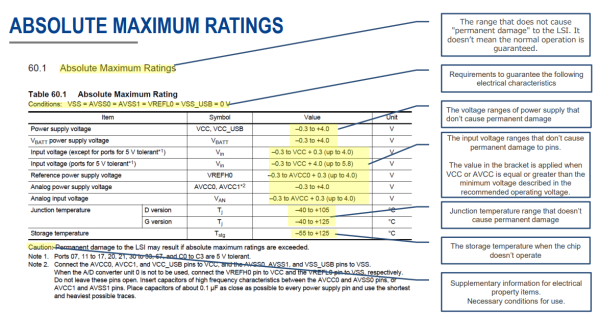Microcontroller (hereinafter referred to as "MCU") hardware manuals are essential and highly important resources for anyone developing products that incorporate MCUs. However, with the increasing complexity of MCU functionality, these manuals have become significantly longer and more complex over time.
As the content becomes more complex, there are more and more questions that arise about the information provided in the manual. For those who are new to developing MCUs, the manual can sometimes feel like a book of magic spells.
While we continue to strive for better readability in our manuals, we have created a hardware manual guide to improve the readability of existing manuals based on the common questions we receive from our customers.
Since different companies sometimes use the same terms in different ways, this guide will help you better understand how RX defines certain terms.
This guide focuses on the most important electrical characteristics in hardware manuals, especially the absolute maximum ratings, recommended operating conditions, and DC characteristics.
In the future, we plan to expand the contents of this guide to include AC specs, various peripheral functions, and more.
Here is what the explanation looks like
This is an example of the explanation of the absolute maximum ratings table. One area that often generates questions is how we represent input voltage. For example, the notation "-0.3~VCC+0.3 (max 4.0)" may not be immediately clear. Our guide provides additional information and clarifications to help you better understand these parts and avoid any confusion. Understanding the contents of the hardware manual quickly and accurately can greatly improve the efficiency of product development and prevent various problems that may arise after board development.
When you download each product's hardware manual, you'll find this guide right there, like a butler ready to support the manual's content.
So why not give it a read and carry it with you on your journey towards successful RX development?


